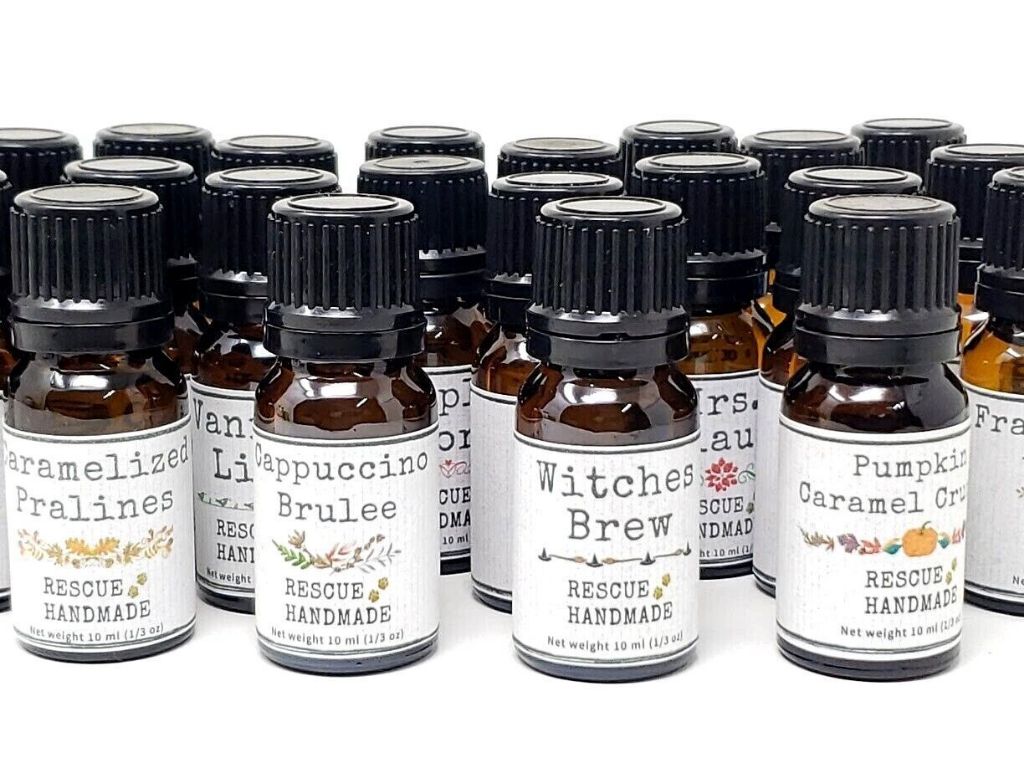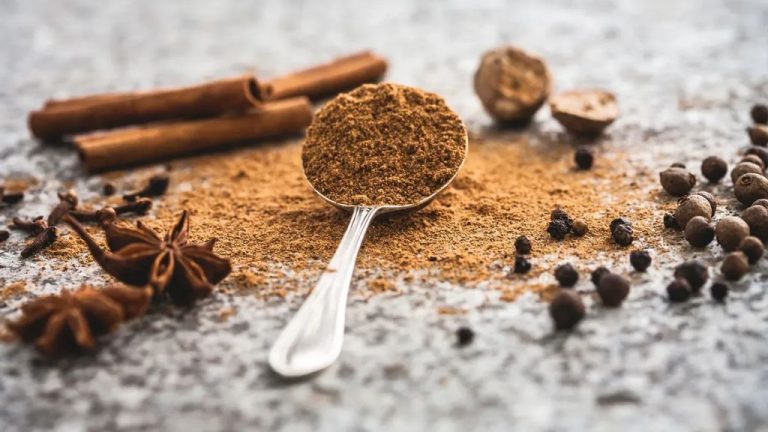What Is An Amber Spicy Fragrance?
What is Amber?
Amber is commonly used to describe a category of fragrances that evoke a warm, sweet, slightly powdery scent profile. The term refers to the fossilized resin from ancient evergreen trees that washed up on shores after being carried down rivers (1). This resin was prized in antiquity and used in jewelry making, and was found to have a rich, sweet aroma when burned or heated (2).
In perfumery, amber refers to a blend of ingredients that aims to recreate the sweet, warm scent of the fossilized resin. These ingredients include vanilla, labdanum, benzoin resin, and balsamic notes like styrax and Tolu balsam (1). Amber accords also often contain musky, powdery, or leathery notes to enhance the warmth and sweetness. Though natural ambergris was originally used in amber accords, most modern perfumes use synthetic recreations for ethical and cost reasons.
The first use of an “amber” accord in perfumery dates back to the late 19th century. Perfumer François Coty pioneered the first amber-based perfume, Ambre Antique, in 1908 (3). Since then, amber has become a signature fragrance note and accord in its own right, known for providing warmth, sweetness, and a sensual powdery texture to perfume compositions.
Sources:
(1) https://experimentalperfumeclub.com/amber-in-perfume/
(2) https://www.bonparfumeur.com/blogs/journal/amber-in-perfumery
(3) https://twinkleapothecary.com/blogs/news/75659780-what-is-amber-perfume
Spicy Fragrances
Spicy fragrances contain notes that give the scent a warm, piquant character. The spicy scent comes from fragrance ingredients like black pepper, cinnamon, clove, ginger, cardamom, nutmeg, and cayenne pepper (source). These notes add a touch of heat and exuberance.
Spicy notes can be used as accent notes or as the dominant fragrance. As accent notes, they provide an extra dash of vibrancy and warmth. For example, bergamot, mandarin and angelica root are brightened with touches of ginger and nutmeg (source). When used as the main notes, spicy fragrances have a bold, fiery character like the spice markets of Morocco, with rich clove, ginger, black pepper, coriander and nutmeg (source).
Key Amber Spicy Fragrances
Some of the most popular amber spicy fragrances include:
- Tom Ford Noir Pour Femme – This fragrance features notes of bergamot, mandarin orange, rose absolute, jasmine, orange blossom, amber, vanilla, patchouli, and sandalwood. The amber and sandalwood provide a sweet warmth, while spices like cardamom add a subtle spiciness.
- Yves Saint Laurent Opium – With top notes of mandarin and bergamot, middle notes of myrrh, jasmine, and carnation, and base notes of vanilla, oakmoss, sandalwood, and opoponax, this oriental spicy fragrance has a pronounced amber character (source).
- Gucci Guilty Pour Femme – Gucci Guilty Pour Femme Eau de Toilette is a floral oriental fragrance with top notes of pink pepper and lilac, heart notes of geranium and amber, and base notes of patchouli. The pink pepper provides a subtle spiciness, while the amber note creates a sweet warmth (source).

These fragrances use amber, often paired with woods like sandalwood or spices like pink pepper, to create a sweet yet spicy scent profile. The amber provides a rich, warm character while notes like patchouli, oakmoss, and spices add depth and prevent the fragrance from smelling overly sugary.
Creating an Amber Spicy Accord
Perfumers build an amber spicy accord by combining amber ingredients like labdanum, benzoin, and vanilla with spicy notes like cinnamon, clove, cardamom, ginger, black pepper, and nutmeg. The ratios depend on the overall effect desired, but amber usually makes up the base while the spices are used more sparingly as top notes.
According to https://experimentalperfumeclub.com/amber-note-accord/, amber pairs well with spicy woody notes and can tame strong leathery, animalic facets. Amber acts as the core for oriental fragrances. Perfumers may use labdanum resinoid at 5-20% as the amber base, adding 1-5% of spices like clove or cinnamon leaf.
The amber to spice ratio is important. Too much spice can make the fragrance too sharp. As noted in this amber spice perfume recipe, you’ll want to use more of the amber base notes like benzoin, labdanum, and vanilla before adding smaller amounts of the spicy essences. This creates a well-balanced accord.
When to Wear Amber Spicy Fragrances
Amber spicy fragrances are very versatile and can be worn year-round for a variety of occasions. However, they tend to shine the most during the cooler fall and winter months, as their warmth and spice notes pair perfectly with the chilly weather. The amber and vanilla base also gives them excellent longevity and projection in cold weather.
For daytime, amber spicy perfumes work beautifully in the office or for casual daytime activities. Apply lightly, as their sweet warmth can sometimes be overpowering in close quarters. Depending on the specific notes, amber spicy scents may lean masculine or feminine, making them great signature scents for both genders. At night, amp up an amber spicy fragrance for extra allure at special occasions or date nights. The sensuality of the vanilla and spice notes can create an intoxicating evening ambiance.
While anyone can wear an amber spicy perfume, they tend to suit middle-aged wearers who appreciate the nostalgic warmth of the amber-vanilla core. The spice notes also give mature amber scents a sophisticated edge. However, amber’s sweetness also makes it very wearable for young women and men too. Apply a light hand until you find the right level of sillage for your unique body chemistry. Overall, amber spicy fragrances work for just about any gender or age, as long as you find the right blend of notes that complements your individual taste and lifestyle needs.
Amber Spicy Fragrance Family
Amber spicy fragrances belong to several fragrance families. While they are primarily categorized under the amber fragrance family, they also have connections to oriental, woody, and fresh spicy genres.
The amber fragrance family is characterized by warm, sweet, resinous scents like vanilla, benzoin, and labdanum. Amber spicy fragrances overlap with this family due to their amber basenotes. However, the addition of spicy notes gives them a bolder, more exotic personality.
Oriental fragrances are known for their warm, ambery-resinous character as well. But amber spicy scents differentiate themselves with their spicy topnotes like cardamom, clove, and cinnamon. Still, the two families share a similar cozy warmth.
Woody fragrances utilize dry wood notes like cedar, sandalwood, and vetiver. When coupled with amber’s sweetness and spice’s bite, a compelling woody oriental accord emerges in amber spicy scents. The wood provides an earthy, grounded quality.
Fresh spicy fragrances contain invigorating citrus topnotes followed by piquant spices like pink peppercorn, ginger, and black pepper. Amber spice scents similarly open with citrus before transitioning to richer spices. Both impart a lively, spirited vibe.
So while amber spice perfumes have their own distinct identity, they skillfully blend qualities from several fragrance families, making them remarkably versatile.
Amber Spicy Fragrance Notes
Amber spicy fragrances typically contain a blend of heart and base notes that work together to create a warm, rich scent profile. Some of the most common heart notes found in amber spicy perfumes include:
- Floral notes like rose, jasmine, and neroli provide a sweet, feminine counterpoint to the spices.
- Fruity notes like bergamot, mandarin, and peach add zest and brightness.
- Spices like cinnamon, cloves, cardamom, and nutmeg add warmth.
The base notes ground the fragrance and often include:
- Amber accord made from labdanum, vanilla, benzoin and oakmoss provides a sweet, resinous richness.
- Woody notes like sandalwood, cedar, and vetiver give depth.
- Vanilla and tonka bean lend a creamy sweetness.
- Resins like myrrh, olibanum, and opoponax add smoky depth.
Patchouli is another common base note in amber spicy perfumes that complements the amber accord while also harmonizing with the spices. Together these notes create a sensual, exotic fragrance blend (source).
Amber Spicy Scent Chemistry
The chemical compounds responsible for the amber spicy smells in fragrances include labdanum, benzoin resin, vanilla, cinnamon, clove, and sandalwood. Labdanum is a resin that provides a sweet ambergris note, while benzoin resin contributes a balsamic vanilla scent. Vanilla contains vanillin, which gives it a creamy sweetness. Cinnamon and clove oils contain eugenol, which provides their distinctive spicy aromas. Sandalwood oil contains woody notes like alpha- and beta-santalol.
When blended together in a fragrance, these amber and spicy notes interact to create a warm, rich, oriental accord. The balsamic labdanum and vanilla form the core amber effect. The cinnamon, clove, and sandalwood add facets of spice and wood. The proportions can be adjusted to make the blend more resinous, sweet, or spicy as desired.
Perfumers use fixatives to help the amber and spice notes last longer on the skin. Good fixatives for these accords include vanilla, sandalwood, ambergris, and musk. The woody and animalic notes of the fixatives help anchor the more volatile components, preventing them from evaporating quickly. This allows the amber spice fragrance to maintain its character over time instead of just having top notes.1
Buying and Storing Amber Spicy Fragrances
When selecting an amber spicy fragrance, it’s important to consider your individual taste and body chemistry. What smells amazing on one person may not work well for someone else. Testing fragrances before buying is highly recommended.
Many perfume shops offer test strips so you can sample different scents. Spray the strip and wait 10-15 minutes for the top notes to settle before smelling. Test on your skin as well, since fragrance interacts differently with everyone’s unique body chemistry. Apply to pulse points like the inside of your wrist or elbow and wear for a few hours to experience how the scent develops.
Once you’ve selected an amber spicy perfume you love, proper storage is key for preservation. Store in a cool, dry place away from heat and sunlight which can alter the fragrance over time. Keeping perfume in its original packaging or in a sealed container will maintain its scent. Avoid extreme temperature fluctuations that can cause the perfume formula to destabilize. With proper care, an amber spicy fragrance can retain its delightful aroma for many years.
History and Popularity
Amber spicy fragrances have a long and rich history. The use of ambergris and labdanum resins date back centuries, prized for their warm, sweet, oriental qualities (Source). Ambergris in particular was highly valued and originally used in ancient Egypt, Rome and Persia. The amber spicy genre emerged in the early 1900s as perfumers like Coty, Guerlain and Chanel experimented with rich, ambery oriental accords like amber, vanilla, spices and woods.
Amber spicy fragrances saw a boom in popularity in the mid-late 20th century. Iconic perfumes like Yves Saint Laurent’s Opium (1977), Estée Lauder’s Cinnabar (1978), and Calvin Klein’s Obsession (1985) made a huge splash and influenced many amber spicy releases thereafter. While traditional old-world amber spice formulas are still beloved, contemporary takes have introduced lighter and fresher interpretations. Amber wood and oud are popular modern twists.
Amber spicy scents remain a go-to fragrance family today. Their warm, addictive, comforting qualities are eternally appealing. Market data indicates the spicy oriental category has seen steady growth over the last decade, suggesting enduring popularity for the foreseeable future (Source). Classic amber spice fragrances will likely always have fans, though innovations blending amber with fruity, floral, and modern accords will continue advancing the genre.



